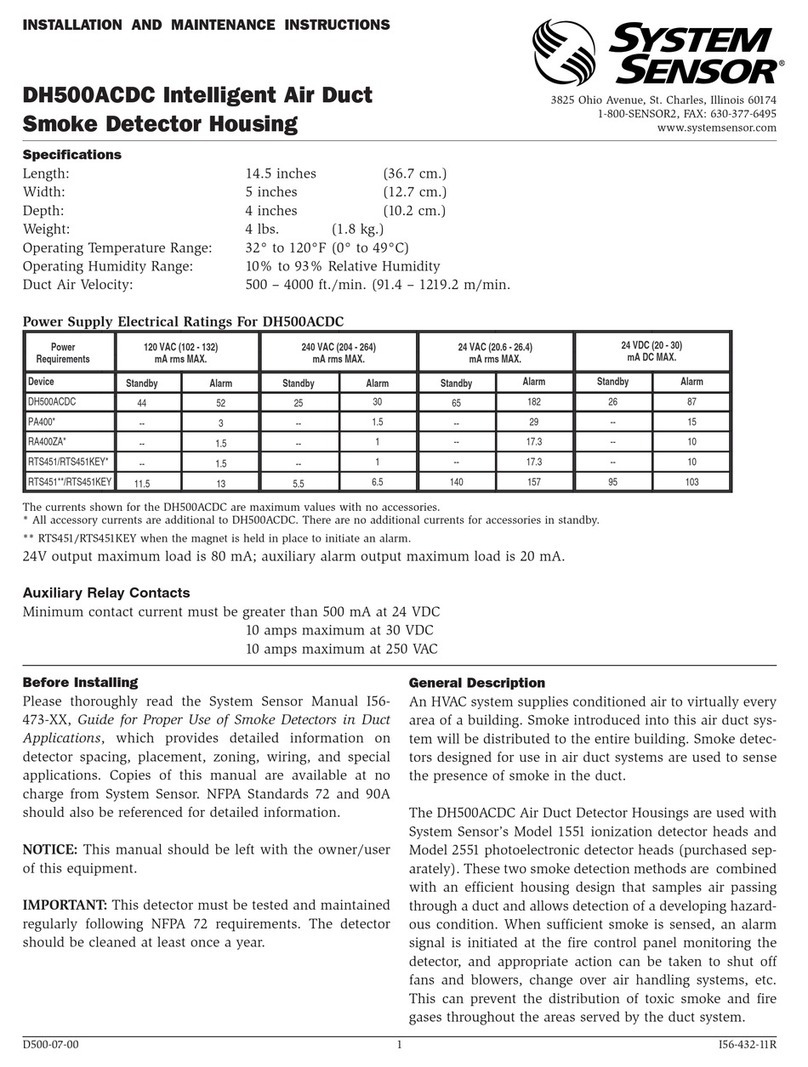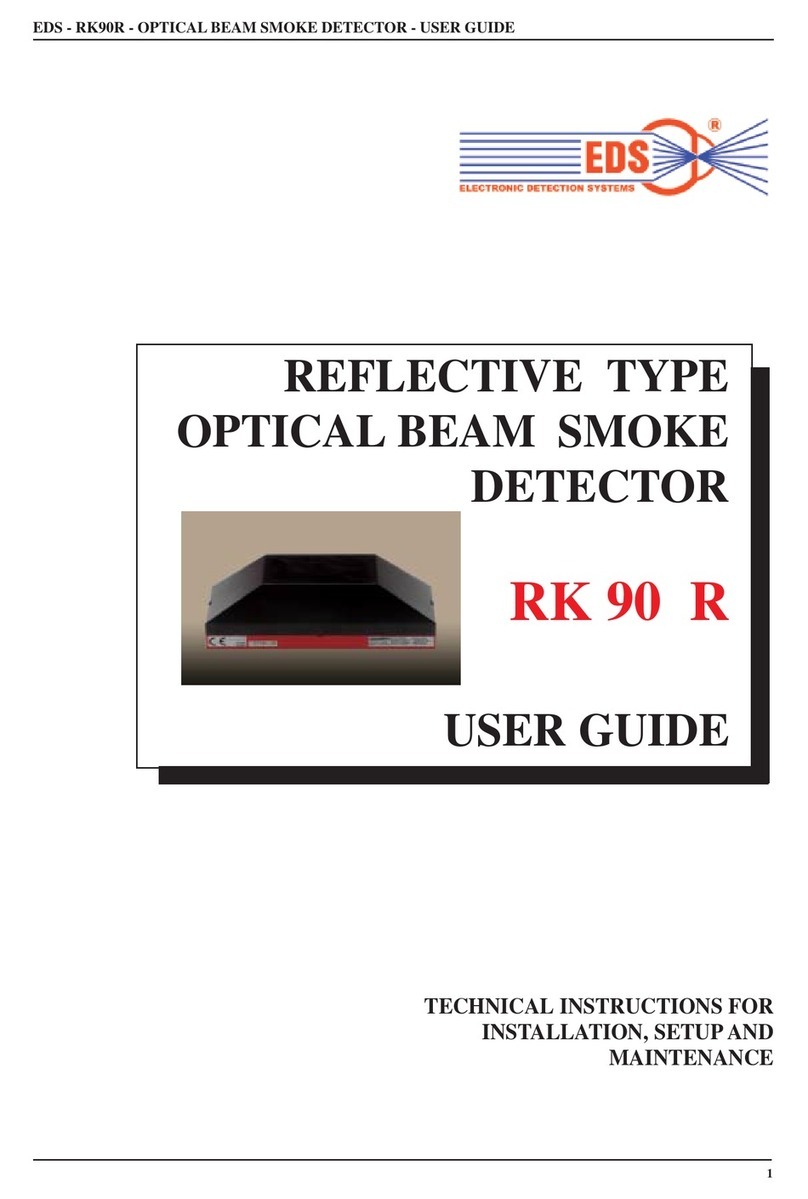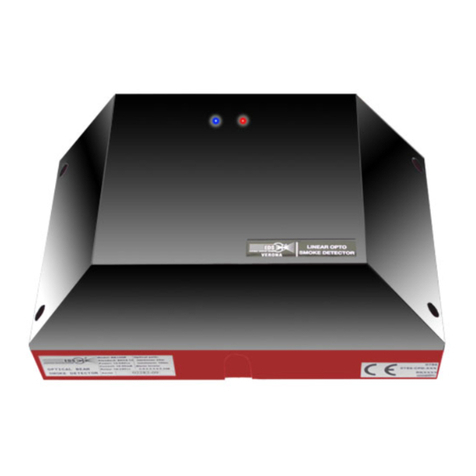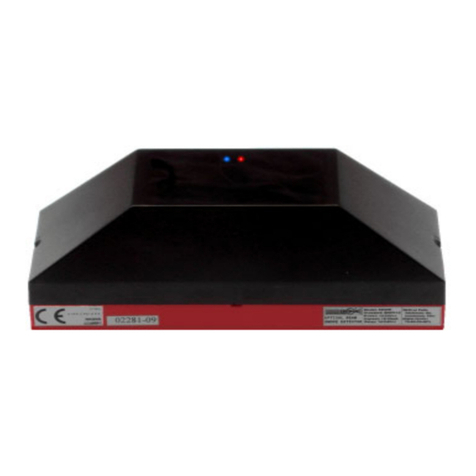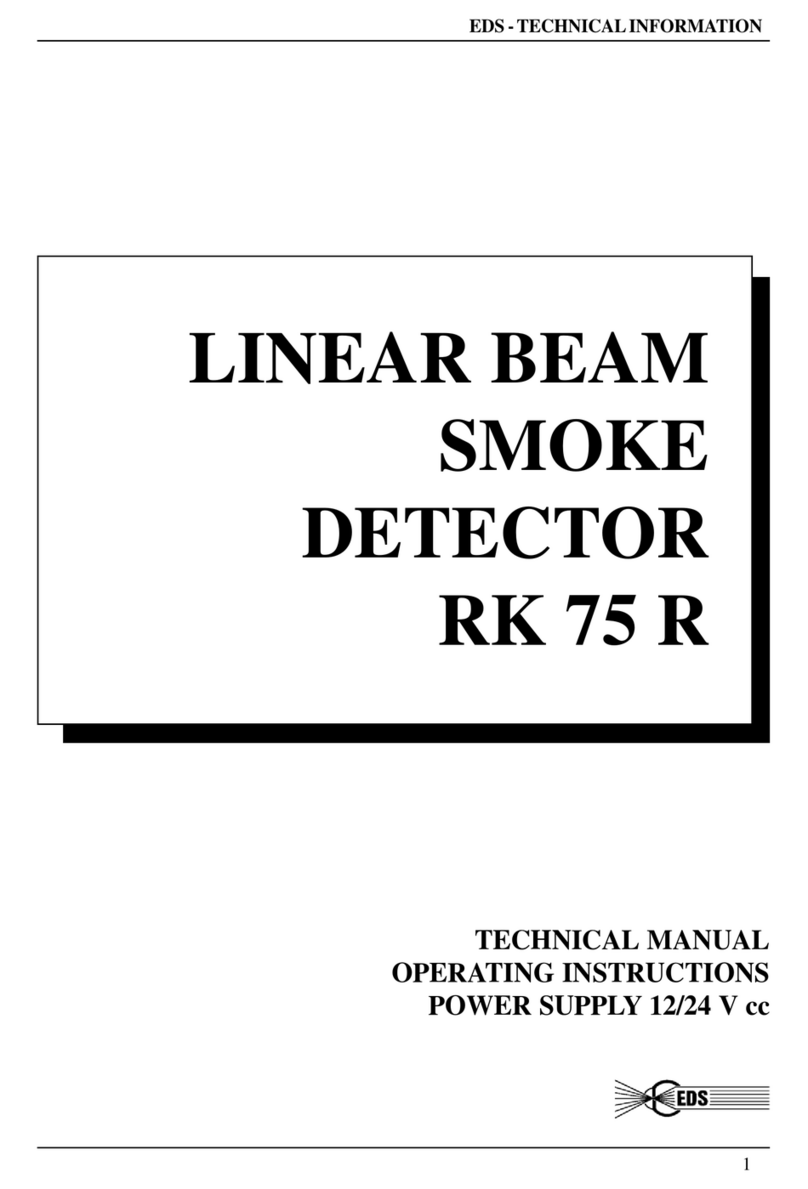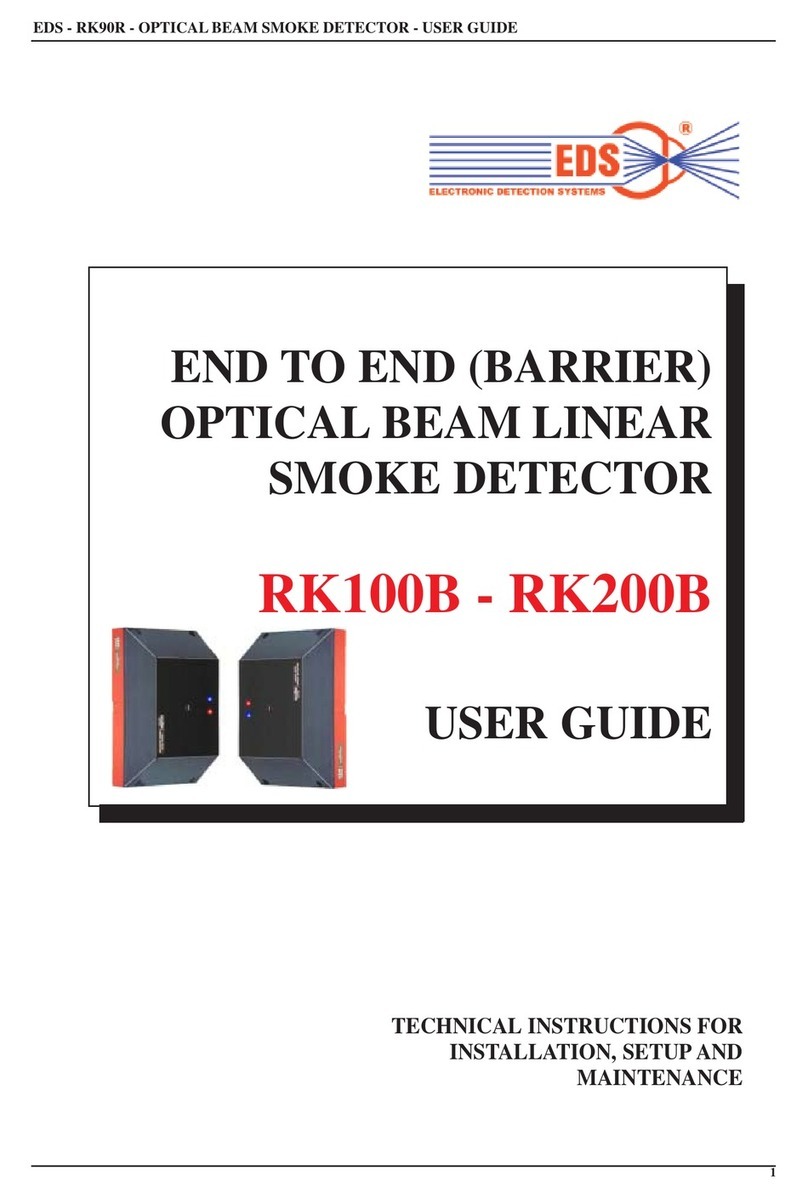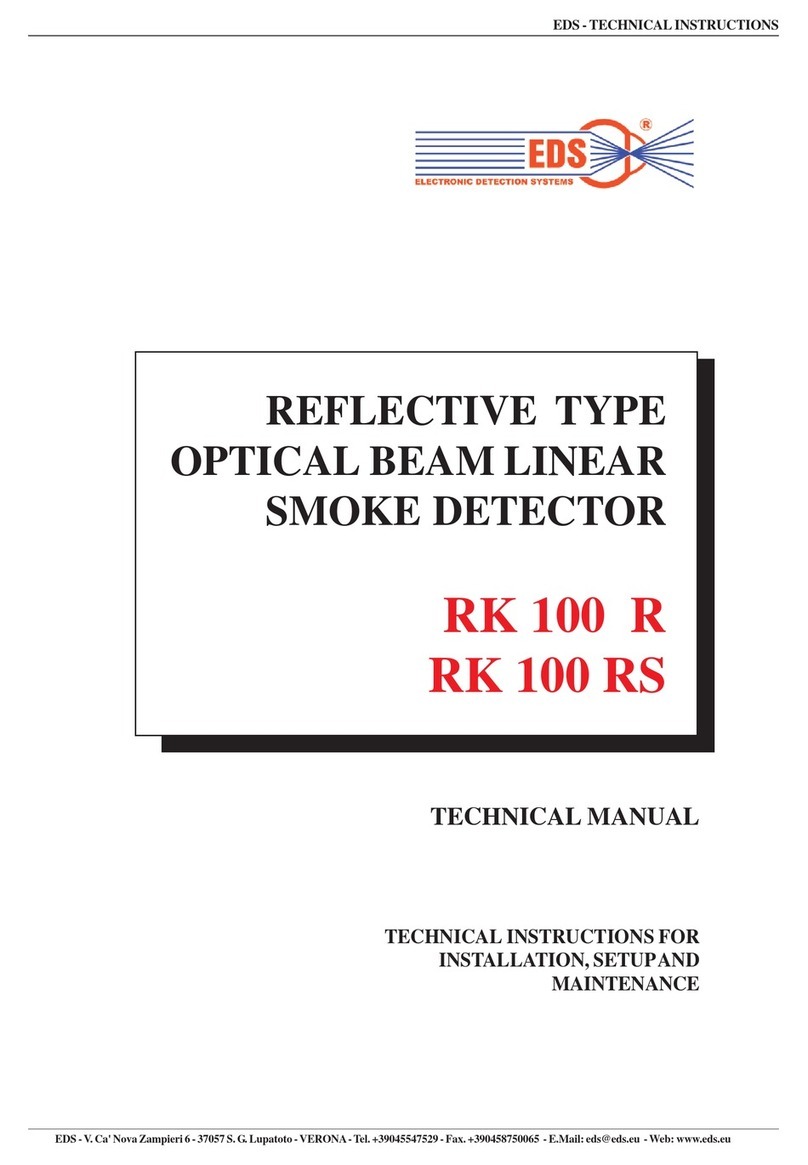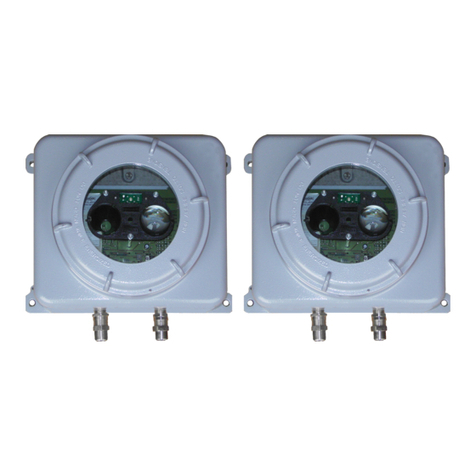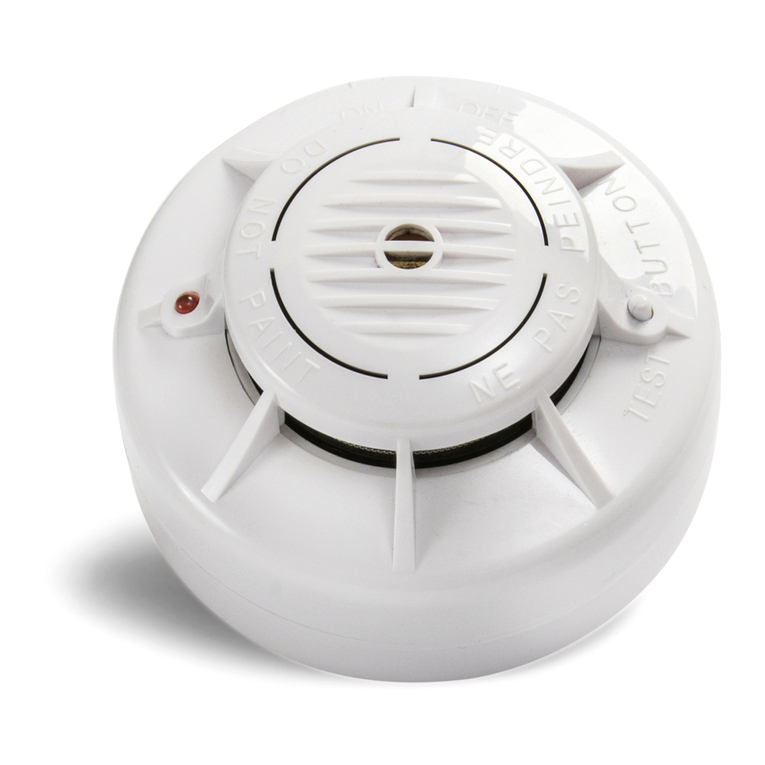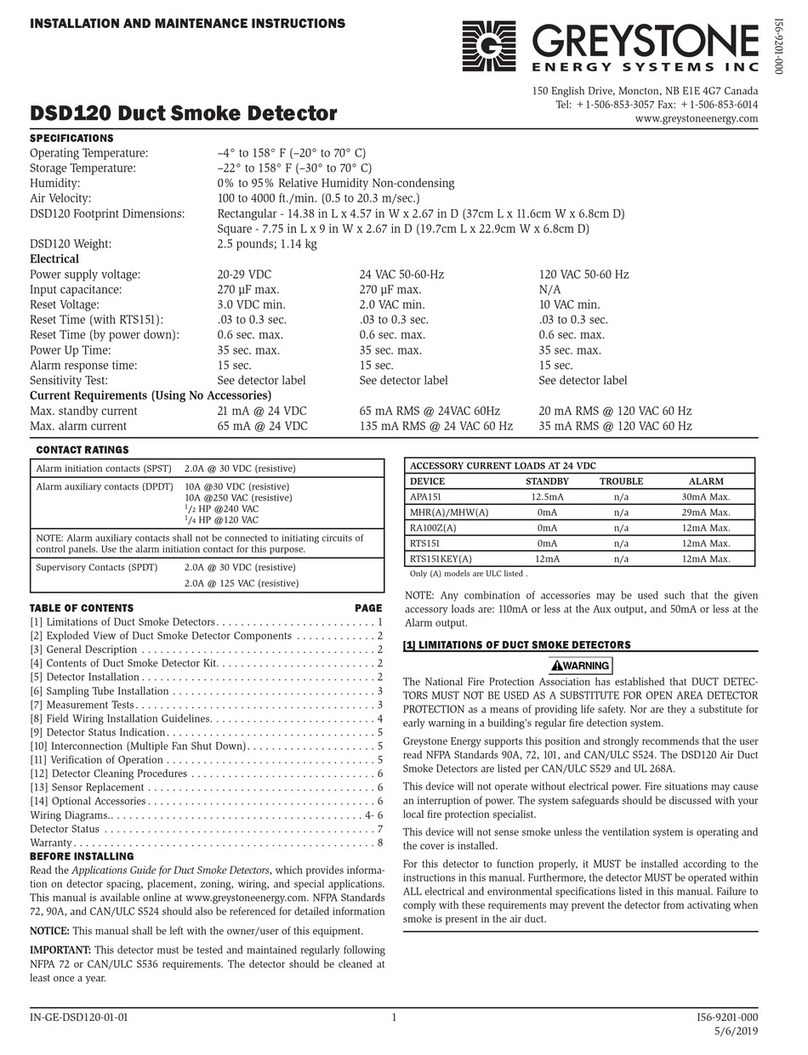
EDS - TECHNICAL INSTRUCTIONS
8
8.9 - if available, connect a 5V fullscale Multimeter between the SIG terminal and the negative power supply one and read
the analog output signal. Instead of the Multimeter it is possible to use the STS01 meter (optional - fig. 11). If the output
signal is very low it means that the operations of optical alignment described in chapter 5 have not been performed in the
right way and therefore must be repeated
8.10 - the Transmitter emits a conic beam which form and dimension, in relation with the distance between TX and RX,
are explained in figures 5 -6.
It’s important that the Receiver is in the center of the Transmitter conic beam because, under these conditions, even if some
small movements of the wall on which the Transmitter is installed (caused by deformations), the reflector remains always
within the beam and therefore active.
To obtain this, the operations of fine centering with output signal measuring, explained below, must be performed
with care.
8.11 - adjust the signal around 3V acting on the trimmer P1 (fig.9).
Attention! - Whether to get the 3V is necessary to adjust the trimmer counterclockwise to almost zero, or if
turning the trimmer with small movements, you notice big changes on the signal level, this means that the
signal sent by the Transmitter, is too powerful.
In this case it is necessary to decrease the power of the Transmitter by acting on the the SW3 switch and turning it to the
lowest steps (eg if SW3 was set to 3, turn on 2 or even to 1).
After performing this operation, the adjustment of the trimmer P1 to get the 3V, becomes simple and non-critical.
8.12 - search for the maximum output signal optimizing the optical alignment of the Transmitter acting slowly and in
sequence on the 3 screws of regulation V1-V2-V3 present on the optical block.
This procedure takes some time but, if performed well, it assures a perfect operation of the detector for many years.
We suggest to use the following procedure:
• on the TX slowly turn the screw V1 clockwise 1/2 turn and then look at the value of the signal visualized on the
multimeter on RX. If the signal increased (for example from 3V it rised to 3,5V) then again turn the screw V1 of the TX
clockwise and then look at the value of the signal on the RX
• continue with this procedure as long as the signal on the RX increases. When it has the tendency to decrease instead,
stop the operation on the screws V1 of the TX returning to the previous position
• if during the operation the signal overcomes 4,5V, to avoid the saturation, act on the trimmer P1 of the RX to bring
the signal back to 3 V, allowing the best evaluation of the variations of the signal
• after finding out the maximum of the signal acting on the screw V1, perform the same operations on the screws V2 and
V3 of the TX. In such way the best possible position of optical allignment is reached.
This procedure is important because it will assure a perfect operation of the detector for long time
8.13 - if you don't have a Multimeter it is possible to get good results in the optical alignment of the detector as well, looking
at the RX Blue and Red leds indications. Operation is the following:
• 1 flash of the Blue Led: 1 Volt
• 1 flash of the Red Led: 0,5 Volts
• if the signal is smaller of 0,5V the Blue led and Red one are OFF




